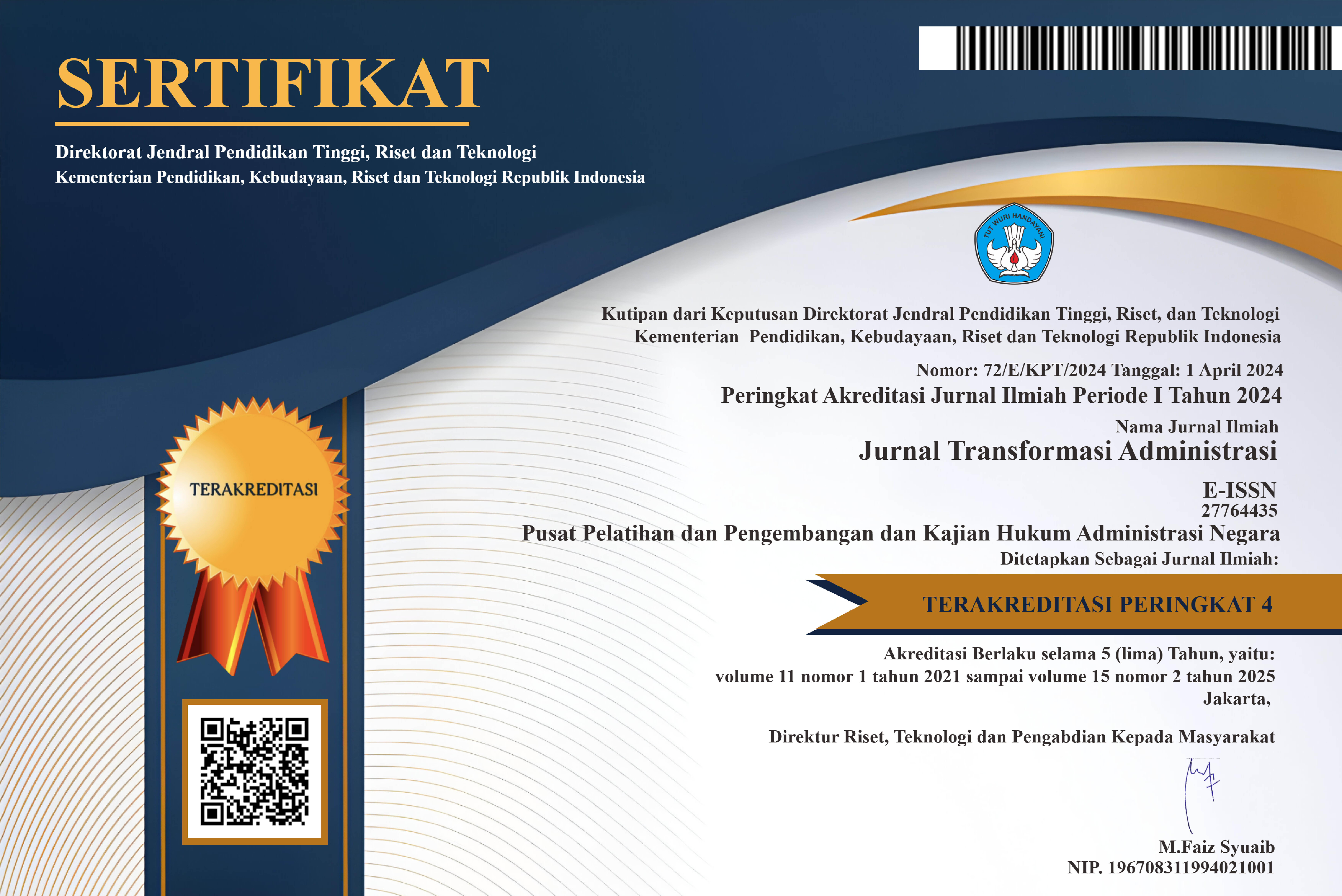PENGARUH INVESTASI DAN INFLASI TERHADAP PERTUMBUHAN EKONOMI INDONESIA
DOI:
https://doi.org/10.56196/jta.v15i01.423Keywords:
Investasi, investasi air dan sanitasi, Inflasi, Pertumbuhan EkonomiAbstract
Economic growth is a signal to achieve successful economic development in people's lives. Investment is considered as one of the factors that can increase economic growth. Economic growth and progress in a country or within a region cannot be separated from investment and controlling inflation. This research aims to determine the effect of investment in the water and sanitation sector, and inflation on economic growth in Indonesia. Water and sanitation investments were chosen because they were considered able to improve community welfare and economic productivity. Based on the Harrod-Domar theory, new investment is needed to spur economic growth, both through increasing production capacity and public spending. The type of data in this research uses time series data from 1995-2022. Data shows that Indonesia's economic growth experienced significant fluctuations during the 1995-2022 period, with an average water and sanitation investment of 17.89 USD and average inflation of 11.47 percent. The results of research using the OLS (Ordinary Least Square) model show that investment in water and sanitation has a negative and insignificant effect, while inflation has a negative and significant effect on economic growth. It is hoped that the government will maintain stability and monitor economic growth by implementing expansionary policies so that economic growth can be maintained. The government needs to maintain price stability for every product, especially basic commodities, to reduce inflation and control the amount of money circulating in society and needs to increase investment and prioritize investment in water and sanitation.
References
Arsyad, L. (2010). Ekonomi Pembangunan Edisi 5. Yogyakarta: UPP STIM YKPN.
Arsyad, L. (2019). Ekonomi pembangunan (Edisi ke-6). Yogyakarta: UPP STIM YKPN.
Badan Pusat Statistik. (2023). Inflasi tahunan Indonesia berdasarkan pengeluaran.
Bank Dunia Setujui Pendanaan Tambahan Untuk Mendukung Investasi Infrastruktur Di Indonesia. (2017, March 24). World Bank. Retrieved January 22, 2024.
Fikriah, & Wulandari, M. (20150. Analisis Pengaruh Investasi Infrastruktur Publik Terhadap Pertumbuhan Ekonomi Di Aceh. Jurnal Ekonomi dan Kebijakan Publik, 2(1).
Fitriani, D., & Wulandari, R. (2021). The effect of public investment on economic growth in ASEAN countries. Jurnal Ekonomi dan Pembangunan, 22(1), 45–59.
Ismail, R., & Simanjuntak, H. (2020). Inflation uncertainty and investment in Indonesia. Asian Economic Papers, 19(3), 1–22.
Jhingan, M.L. (2004). Ekonomi Pembangunan dan Perencanaan. Jakarta: PT Raja Grafindo Persada.
Keynes, J. M. (1936). The general theory of employment, interest, and money. London: Macmillan.
Mankiw, N, Gregory. (2003). Pengantar Ekonomi Makro. Edisi Ketiga. Jakarta: Salemba Empat.
Mankiw. (2013). Pengantar Ekonomi Makro. Salemba: Jakarta.
Mankiw, N. G. (2021). Principles of economics (9th ed.). Boston: Cengage Learning.
Muñoz, U., Rahman, M., & Zhuang, J. (2021). Water and sanitation investment and economic performance: Evidence from Asia. World Development, 143, 105454.
Pembangunan Infrastruktur Merupakan Kunci Perkembangan Pesat Indonesia Sebagai Negara Berpendapatan Menengah. (2012, August 24). World Bank. Retrieved January 22, 2024.
Saran, M.A.B., Suriani, S., & Nasir, M., (2023) The Effect of Foreign Direct Investment and Foreign Exchange Reservees on Economic Growth in ASEAN. International Journal of Finance, Economics and Business, 2(1), 76-83.
Saputra, I., & Azhari, A. (2021). Dampak inflasi terhadap pertumbuhan ekonomi di Indonesia. Jurnal Ekonomi dan Pembangunan Indonesia, 21(1), 33–42.
Simanungkalit, Br Erika Feronika. (2020). Pengaruh Inflasi Terhadap Pertumbuhan Ekonomi di Indonesia. Journal of Management: Small and Medium Enterprises (SMEs) 13 (3), 327-340.
Solow, R. M. (1956). A contribution to the theory of economic growth. The Quarterly Journal of Economics, 70(1), 65–94.
Sukirno, Sadono. (2000). Pengantar Teori Makro Ekonomi. Edisi Kedua. Jakarta: PT Raja Grafindon Persada.
Sukirno, Sadono. (2006). Ekonomi Pembangunan. Edisi Kedua. Jakarta: Prenada Media Group.
Sukirno, S. (2010). Makroekonomi Modern. Penerbit PT. Raja Grafindo Persada.Jakarta.
Todaro dan Smith (2003), Pembangunan Ekonomi di Dunia Ketiga. Erlangga, Jakarta.
Todaro, M. P., & Smith, S. C. (2010). Pembangunan Ekonomi.
Todaro, M. P., & Smith, S. C. (2020). Economic development (13th ed.). Boston: Pearson Education.
UNICEF & WHO. (2022). Progress on household drinking water, sanitation and hygiene 2000–2020: Five years into the SDGs.
Wiriani, Erni. (2020). Pengaruh Inflasi dan Kurs Terhadap Pertumbuhan Ekonomi Indonesia. Jurnal Samudra Ekonomika 4 (1), 41-50.
World Bank. (2023, 13 Desember). Indonesia Economic Growth to Ease Slightly in 2024 as Commodity Prices Soften.
World Bank Group (2014). Building Better Infrastructure: Investing in Development. Washington DC: World Bank Group. ISBN: 978-1-4648-0216-8.
Yahya, A.T., & Syahur, S. (2020). Pengaruh Investasi Infrastruktur Terhadap Pertumbuhan Ekonomi di Indonesia. Jurnal Ilmiah Mahasiswa, 5(3),146-156
Zhang, Y., Liu, H., & Wang, J. (2021). Infrastructure investment, environmental quality and economic growth in developing countries. Sustainability, 13(7), 3675.
Downloads
Published
How to Cite
Issue
Section
License
Copyright (c) 2025 Jurnal Transformasi Administrasi

This work is licensed under a Creative Commons Attribution 4.0 International License.














